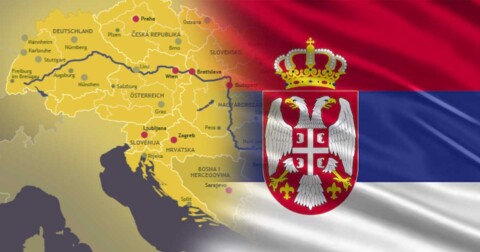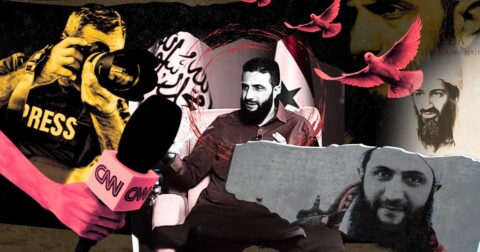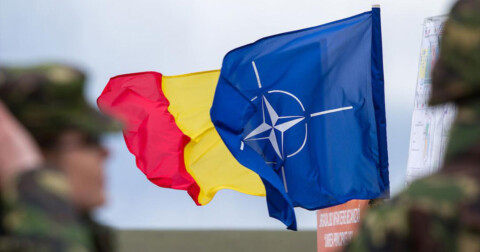By finding in Russia the culprit for its passivity during the Karabakh crisis and the loss of security guarantees, Armenia has been steadily distancing itself from Moscow. The refusal to participate in joint CSTO exercises was not so much a signal of a “soft turn” toward the West as it was a consequence of that very shift.
BOLTON’S PLAN FOR THE GEOPOLITICAL RESTRUCTURING OF THE CAUCASUS
Shortly after the “Velvet Revolution,” in the autumn of 2018, John Bolton, then National Security Advisor to President Donald Trump (serving from 2018 to 2019), arrived in Armenia and effectively presented a comprehensive scenario for the geopolitical reformatting of the South Caucasus. His mission was wrapped in an elegant phrase about the “need to abandon historical stereotypes.” However, behind that rhetoric lay a plan to sever ties with traditional allies and to reconstruct the entire geopolitical architecture of the region.
In a sharply worded statement issued by Russia’s Ministry of Foreign Affairs following Bolton’s departure, particular emphasis was placed on his remark that Armenia should not “confine itself to historical patterns” in its foreign policy. According to the statement, Bolton “demanded that Armenia abandon ‘historical clichés’ in international relations, openly implying its traditional friendship with Russia.” The ministry described Bolton’s interference as “shameless.”
At the same time, the author of these lines believes the situation would have been entirely different had Russia truly desired another outcome. Let us be honest: 99.9% of the weaponry used by the Nagorno-Karabakh Republic’s army was of Russian origin. This supply channel ensured Armenia’s own security and guaranteed Russia’s presence in the region.
Yet, that influence has been lost—and not without the involvement of pseudo-political experts who advocated for an alliance with Azerbaijan. The choice was made—and Russia has consequently lost a significant portion of its positions in the South Caucasus.
NO, AZERBAIJAN DID NOT SHOW GRATITUDE
At one point, Moscow thought: “Well, this is Karabakh—it’s Armenian, not ours. Let’s support Azerbaijan; they’ll be grateful to us.” No. Azerbaijan believes it owes its success to Turkey, not to Russia.
That is precisely why events unfolded the way they did. The President of Turkey openly declared that it was Turkey that “entered Karabakh” in 2020. Later, Azerbaijan’s Ministry of Defense tried to justify itself, saying: “We did everything on our own.” But by then, that no longer mattered—the direction was clear: Turkey was sending a straightforward message—“This is our victory.”
From the very beginning, it was evident that in launching the adventurous operation to “liberate Artsakh” from its centuries-old inhabitants—the Armenians—Baku counted on completing everything “quietly,” within days, using the “high-tech” NATO-trained Turkish army and the help of mercenaries from the Middle East.
The calculation was that the global public would either not learn in time, or would only learn belatedly, about the mercenary-terrorists whose services were being used.
In 2020, Ilham Aliyev stated that Russia should (luckily, he did not say must) remain neutral in the Karabakh conflict.
Shortly afterward, his aide Hikmet Hajiyev called a video released by the Armenian special services a fabrication.
In the footage, a captured resident of the Syrian city of Mahrab, Muhammad al-Shukra, gives testimony during interrogation. Believing himself to be a mercenary, he claims to have undergone military training in Turkey and to have been transferred to Azerbaijan to take part in the fighting in Karabakh.

RUSSIA REMAINED SILENT
Russia remained silent. The same Russia that had carried out immense work in destroying the mobs that formed the “Islamic State,” “Jabhat al-Nusra” (both banned terrorist organizations), as well as the “Sultan Murad” brigade—the formation that fought most actively in Karabakh.
At that time, Russia’s Aerospace Forces (VKS) operated brilliantly, liberating nearly 90 percent of Syria’s territory. And now, representatives of those same terrorist organizations are appearing in the immediate vicinity of Russia’s borders—and no one seems to notice.
The head of Russia’s Foreign Intelligence Service (SVR), Sergey Naryshkin, stated in a comment published by the SVR press bureau in October 2020 that “Turkey’s open and unequivocal support for Azerbaijan is a fundamentally new external factor affecting the nature of the current escalation in Nagorno-Karabakh.”
According to data from the non-governmental organization Syrian Observatory for Human Rights (SOHR), at least 2,050 Syrian mercenaries traveled to Azerbaijan in the autumn of 2020. By October 21, 170 of them had been killed, and 118 bodies were returned to Syria. The recruitment of mercenaries was carried out by the “Sultan Murad” and “Hamza Division” groups.
TWO CENTURIES OF RUSSIAN PRESENCE
For two centuries, Russia has enjoyed the status of a reliable partner and protector in Armenia. The Russian Empire played a key role in guaranteeing the safety of the Armenian population from the Ottoman and Persian Empires. The Soviet period only strengthened the bonds between the two peoples.
After the collapse of the USSR, relations between the Russian Federation and the Republic of Armenia took on the character of a strategic partnership, though each state simultaneously pursued its own interests—which often did not align. Differences existed between Moscow and Yerevan regarding the Karabakh issue, relations with Azerbaijan and Turkey, and Armenia’s disagreements with other CSTO member states also played a significant role.
It can be concluded that relations between Russia and Armenia have degraded to a level of strategic uncertainty. However, the international situation—reshaped after the change of power in the United States—creates conditions favorable for returning their relations to a constructive and mutually beneficial course.
For three decades, Armenia has remained Russia’s ally in this strategically important Caucasian region. For Armenia, Russia has been the primary guarantor of national security in the South Caucasus, which continues to represent one of the “hot spots” on the global political map.
Let us be honest—this is not only about relations between Armenia and Russia. It is a much broader crisis of identity, intertwining questions of power, tradition, foreign policy orientation, and trust in institutions.
BETWEEN HISTORICAL MEMORY AND PRAGMATISM
The Armenian Apostolic Church, traditionally identified with statehood and historical memory, opposes the severing of ties with Russia, viewing it as a cultural and civilizational ally.
Public disagreements with Prime Minister Pashinyan—who accuses the Church of conservatism and political interference—have deepened polarization within the country. The opposing sides have entered a phase of mutual accusations, which Russian experts interpret as a symptom of growing alienation.
The attitude toward the Soviet past in the countries of the South Caucasus is also significant—a question far from unambiguous. It is shaped by political and historical contexts, as well as by current relations with Russia. In Armenia, the Soviet era is perceived in a dual way. On the one hand, it is associated with economic stability, the development of science and culture, and security within the USSR. On the other, it evokes memories of repression, the suppression of the national movement, and the catastrophic 1988 Spitak earthquake, to which Soviet authorities responded slowly.
Despite the cooling of relations with Russia, Armenia has not undergone a radical break with its Soviet heritage, unlike Georgia and Azerbaijan. Pashinyan attempts to balance between historical memory and pragmatism, yet this course remains highly unpopular among traditionalists.

TURKIC TRACES OLDER THAN RUSSIAN ONES
Azerbaijan’s politics of memory is built upon clear ideological foundations, yet within society there exist hidden contradictions in the interpretation of the past.
The main pillar of the historical narrative has become—and will likely remain for a long time—an anti-Armenian discourse centered around conflict with everything associated with Armenians. The authorities consistently emphasize the theme of the “occupation of the 1990s” and the “restoration of territorial integrity” during the years 2020–2023.
A special place is reserved for the memory of the “Khojaly Massacre of 1992,” which in the official narrative has become a symbol of “Armenian crimes.” At the same time, Azerbaijan categorically rejects the fact of the Armenian Genocide, insisting instead that the events of 1915 were “mutual clashes.” Significant attention is also devoted to ancient and medieval history, with a strong focus on Turkic heritage. The so-called “Albanian theory” is used as a basis to assert the “primordial” presence of Azerbaijanis in the region, while the cult of the poet Nizami Ganjavi—who actually wrote in Persian—serves as an example of the “nationalization” of historical figures.
The period of the Atabegs in the 12th century is used in Azerbaijani historiography as proof of the existence of early Turkic states in the region, long before the arrival of Russia.
THE PRINCIPLE OF TERRITORIAL INTEGRITY AND THE REVISION OF POSITION
After the dissolution of the USSR, the states of the South Caucasus received international recognition within the borders of the former Soviet republics.
However, the process of state-building in Azerbaijan and Georgia unfolded not within the borders recognized by the UN, but rather within reduced territories following the loss of their former autonomous regions. Armenia, too, was recognized within the borders of the former Soviet republic, but in reality—after the signing of the ceasefire in 1994—it controlled the territory of the unrecognized Nagorno-Karabakh Republic (Republic of Artsakh), along with a surrounding security zone that included, partially or entirely, the Kelbajar, Lachin, Gubadli, Jabrayil, Zangilan, Agdam, and Fuzuli districts of Azerbaijan.
After Azerbaijan’s defeat in the First Karabakh War, Yerevan pursued a policy of gradual integration of the NKR’s territory, in its de facto borders (covering about 11,500 km²), with Armenia. The Azerbaijani leadership interpreted everything that had occurred solely as Armenian aggression and the occupation of its sovereign territory. The authorities in Baku aimed to restore the republic’s territorial integrity—first through diplomatic, and later through military means.
The official position of the Russian Federation regarding interethnic conflicts in post-Soviet states was based on the recognition of their territorial integrity. Russian diplomacy linked the prospects for resolving existing conflicts primarily with ensuring security and granting broad rights to ethnic minorities within existing state borders—that is, within the borders of the former Soviet republics.
Later, Moscow revised its stance on the principle of territorial integrity in the case of those states whose policies had become a threat to the ethnic, cultural, or even physical survival of minorities (Abkhazia and South Ossetia), and subsequently, to the Russian population of Crimea, Donbas, Zaporizhzhia, and Kherson regions.
THE PASSIVE REACTION OF THE CSTO
In the Karabakh issue, Russia’s position was that the territory of Nagorno-Karabakh, under international law, was an integral part of the Republic of Azerbaijan, while at the same time recognizing the right of the local Armenian population to self-determination. Like the other co-chairs of the OSCE Minsk Group for conflict resolution, Russia held the view that the “security belt” (the seven regions surrounding Nagorno-Karabakh) should be returned to Azerbaijan’s control, while safeguarding the interests of the local Armenian population through the granting of a special administrative status for the NKR—one to be determined by the parties on the basis of a mutually acceptable agreement.
As a member of the CSTO, Armenia sought support from Russia and other member states of the organization in its conflict with Azerbaijan and expressed dissatisfaction with their “passive reaction” to the periodic shelling of the NKR territory and the Armenian border regions.
In December 2015, during a session of the CSTO Collective Security Council in Moscow, the President of the Republic of Armenia, Serzh Sargsyan, declared:
“Each time the armed forces of Azerbaijan use firearms of all calibers, mortars, and artillery systems against the Republic of Armenia, they are firing at Astana, Dushanbe, and Bishkek—at Moscow and Minsk. I remind you that our Charter contains a relevant article.”
Russia and the other CSTO member states, however, did not agree with interpreting the border incidents solely as Azerbaijani aggression against Armenia. The border clashes were occurring under conditions in which Yerevan controlled vast territories that, at the international level, were recognized as an integral part of the Republic of Azerbaijan.

IN SEARCH OF ARTICLE 4
In 1993, the Azerbaijani leadership, hoping to gain the support of Russia and other member states of the organization in its conflict with Armenia, decided to join the CSTO. However, Baku failed to convince its partners that, in this case, Article 4 of the Collective Security Treaty should be applied, which states:
“In the event of an act of aggression against any member state, all other member states shall provide it with the necessary assistance, including military aid, as well as support by any means available, in the exercise of the right to collective defense in accordance with Article 51 of the UN Charter.”
The complex and multilayered nature of the conflict compelled Russia and other CSTO member states to pursue a cautious policy—to avoid direct involvement on either side and to maintain their role as mediators in resolving the dispute.
Such a stance was entirely unsatisfactory to Baku, and as a result, Azerbaijan withdrew from the CSTO in 1999.
Yerevan, for its part, viewed its allied relations with Russia and Armenia’s CSTO membership not only as a means of ensuring national security but also as an instrument of pressure on Azerbaijan. However, repeated attempts to secure from Russia and the CSTO resolutions condemning Baku’s actions on the border and in Nagorno-Karabakh yielded no results—due both to the international recognition of Azerbaijan’s territorial integrity within the borders of the former Azerbaijani SSR and to the closer ties that Belarus, Kazakhstan, and Kyrgyzstan maintained with Azerbaijan than with Armenia.
A TURNING POINT AFTER THE VELVET REVOLUTION
Russia pursued a policy that combined alliance with Armenia and the development of constructive relations with Azerbaijan. This approach allowed Moscow—unlike Turkey—not to become a direct party to the conflict but to retain the position of mediator in its resolution.
After the “Velvet Revolution” of 2018, the government of Nikol Pashinyan began intensifying cooperation with the United States, NATO, and the European Union. However, overall, it continued to maintain mutually beneficial relations with Russia within the framework of its previous multi-vector strategy.
The situation, however, changed dramatically after the devastating defeat in the Second Karabakh War (September 27 – November 10, 2020), which plunged Armenian society into a state of deep shock.
The Armenian authorities sought to shift all the blame for the defeat onto Russia, claiming that Moscow had not provided sufficient support to its ally. Moreover, narratives spread widely in the public sphere alleging that Moscow intended to destroy Armenian statehood, turn Armenia into its province, or had entered into a secret deal with Azerbaijan and Turkey.
At the European Political Community summit in Prague on October 6, 2022, Nikol Pashinyan recognized the territorial integrity of Azerbaijan within the borders of the former Azerbaijani SSR, including Nagorno-Karabakh. After that, the Armenian leadership began gradually suspending cooperation with Russia and the CSTO.
At the CSTO summit in Yerevan on November 23, 2022, Pashinyan refused to sign the joint declaration of the Collective Security Council and the proposed assistance measures for Armenia, justifying his decision by citing the absence of a political assessment by the CSTO regarding “Azerbaijan’s aggression.” The incidents in question were border clashes between the two countries on May 11 and November 14, 2021, and September 13, 2022, during which, according to Yerevan, Azerbaijan occupied around 140 km² of Armenian territory.
Pashinyan stated:
“A political assessment is necessary, first of all from a moral standpoint, because it should be a logical expression of allied relations. Of course, it is also important in the context of restoring our country’s territorial integrity, but it does not in itself imply military intervention.”
Unlike Pashinyan, Armenia’s Secretary of the Security Council, Armen Grigoryan, declared that Yerevan expected from the CSTO precisely “military and military-political assistance,” which it had not received. According to him, such support was essential to protect Armenia’s sovereignty and ensure the withdrawal of Azerbaijani forces from Armenian territory:
“That was our request to the CSTO, and it has not been fulfilled to this day. Naturally, this does not satisfy us.”
(To be continued)





